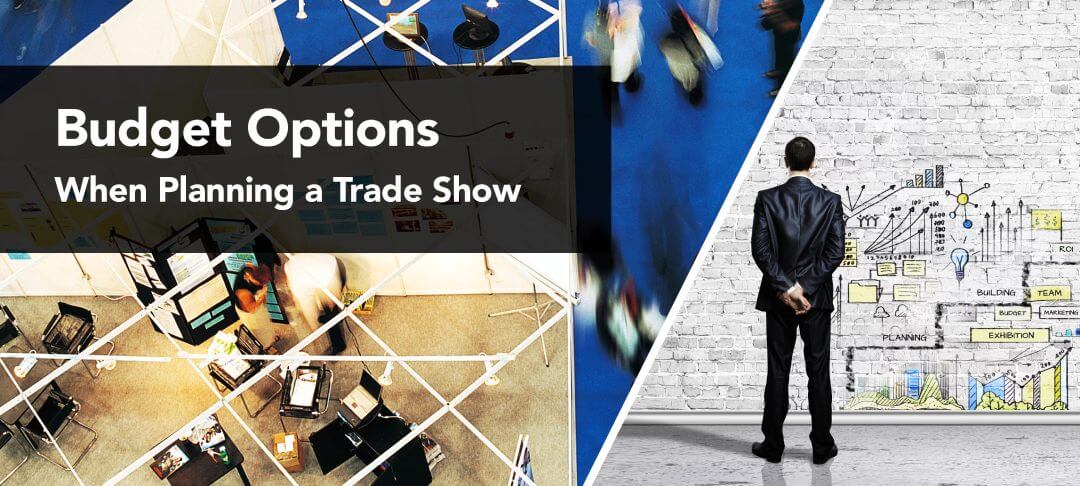When you are planning a trade show program, budgeting can be a never-ending learning curve not only for you but for all of your partners, both internal and external. Earlier we broke down some of the major trade show costs that you can expect, and we even suggested a few ways to control some of these costs—or to reduce them, if budgets are cut.
You can keep a tighter rein on costs while you also learn to determine the best course for your program—and to present the options which resulted in your decisions when the time comes to defend your budget. Because it is important for you to understand these options, here are some elements to consider if you want to create alternative scenarios.
Show Selection:
Just because your company has exhibited at a particular show for the past 15 years is no reason to exhibit in year 16. Ask the show organizer for an audit; be suspicious if there are no hard numbers. One fact of modern trade show life is that, in many industries, shows focused on broad-based audiences are becoming less attractive than those targeted to specific market segments. For example, there once was a show called “Internet World”—all things internet. Because it wasn’t targeted to specific constituencies, the show, once a robust force in the tech world, died of neglect. An audit will provide the data you need to back up your decision.
New Exhibit Construction:
Ask your exhibit house about the types of materials being used to build your new exhibit. Are there ways to use lighter materials that will cut some of the shipping and drayage charges? Can your exhibit house build fewer properties and augment them with rental pieces for larger shows? Instead of a hanging sign that involves rigging charges, are there floor mounted structures that can provide high identity? Look at your show schedule: how durable are the materials being used for your exhibit? How often will your properties need to be replaced or refurbished? Is renting an exhibit a better option for you than owning?
Exhibit Space:
Are you choosing the same space configuration year after year because that’s the size space your company has always reserved? Are you finding that there vacant areas that make your exhibit look uninviting? People are attracted to exhibits where other people gather, exhibits that look like they are the place to be. Take photos of your exhibit and decide if you really need the amount of space you are buying. Cutting back on floor space can mean significant savings—savings that can be redirected to other customer-focused initiatives.
Promotional Materials:
Before the digital age, there were already conversations about how much literature to bring to shows. Hotel dumpsters were full of brochures and giveaways that didn’t pass the “stuff I need to bring home” test. Now that digital makes it possible to NOT ship literature and other materials, there is no reason to pay the extra costs associated with (1) printing extra copies to bring to trade shows; (2) shipping the materials to show site; and (3) arranging the labor and space for literature stock to be replenished from accessible storage.
Again you may be shipping materials to show site because your company has always shipped literature. Now is the time for you to educate your product groups, who are probably the strongest advocates of this practice, about the realities of trade show attendees. And when someone suggests promotional cowboy hats, remind them that most people travel with a carry-on to avoid charges for checked baggage. Tell them about the dumpsters.
Sponsorships:
Sponsorships can be extremely effective—or they can simply be a budget drain. If the show organizer offers a sponsorship that heightens your presence and is consistent with your brand promise, then if at all possible, seize the opportunity. However, if you are funding a sponsorship because you always have sponsored wine and cheese or because your product folks are pushing you to do it, initiate the conversation about how sponsorships should elevate your presence at the show and ask about perceived return on investment. One thing you can do is talk to the show organizer about a sponsorship not on offer, one that you suggest and that works for your company. If your idea is implemented, make sure you have the right of first refusal for that sponsorship the next year.
For your trade show program to take its rightful place among all marketing initiatives, staying on top of your (usually) very large budget is critical. As the person responsible for the trade show program, you need to be fearless in your questioning. You have probably found that many people within your company don’t “get” what happens at trade shows or about how trade shows contribute to revenue. Intelligent discussions about budget allocations and how your decisions for spending your budget dollars can go a long way to fostering understanding.


